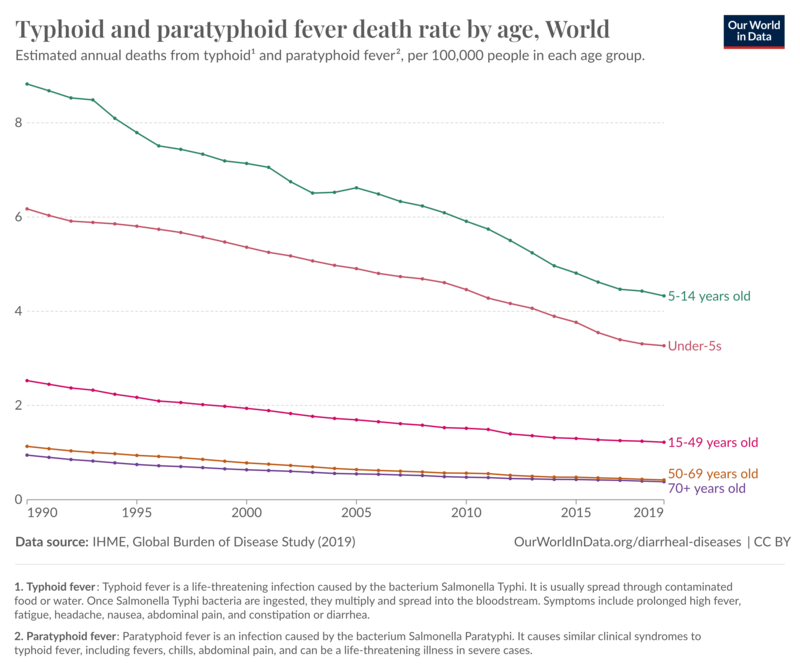|
Typhoid fever is a serious illness caused by a bacterium called Salmonella Typhi. It can be life-threatening and is usually spread through contaminated food or water. Typhoid is more common in places with poor sanitation and unsafe drinking water, both in cities and rural areas. The increasing number of people living in certain areas, combined with climate change in areas where sanitation and water supply are contaminated, might make typhoid more common worldwide. Antimicrobial resistance, where antibiotics don’t work as well against some bacteria, makes typhoid more difficult to treat, leading to a higher number of people suffering severe disease, or death. It can also make outbreaks more difficult to contain. Roughly 9 million people become sick from typhoid every year, and 110,000 people die from it worldwide (2019 figures). Travellers can also get typhoid, especially in places like Asia and sub-Saharan Africa. Even if you're vaccinated, you can still get sick if exposed to contaminated food or water. So, it's important for travellers to be careful about what they eat and drink. Similarly, paratyphoid, caused by Salmonella Paratyphi A, B and C can spread the same way, causing symptoms that are indistinguishable to typhoid fever. S. Paratyphi is mainly restricted to Asia/Oceania and there is no vaccine available for it yet. 13 million cases of typhoid and paratyphoid fever occurred in 2019. What Exactly Is Typhoid Fever?
https://www.youtube.com/embed/N1lKW2CYU68?wmode=opaque&controls=&rel=0
|




